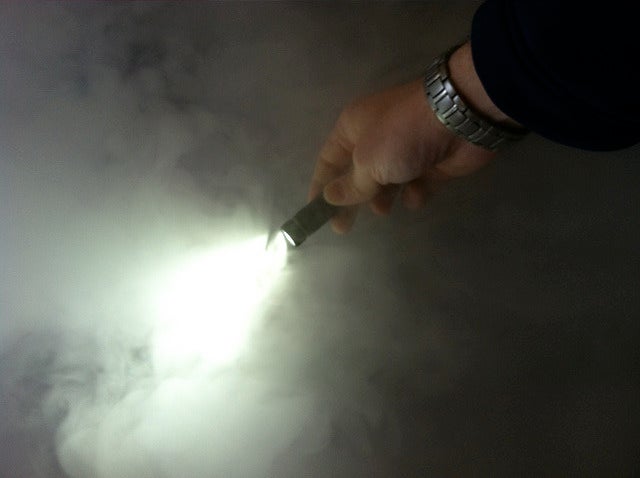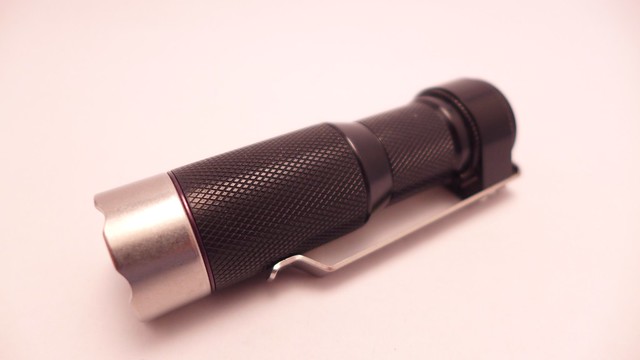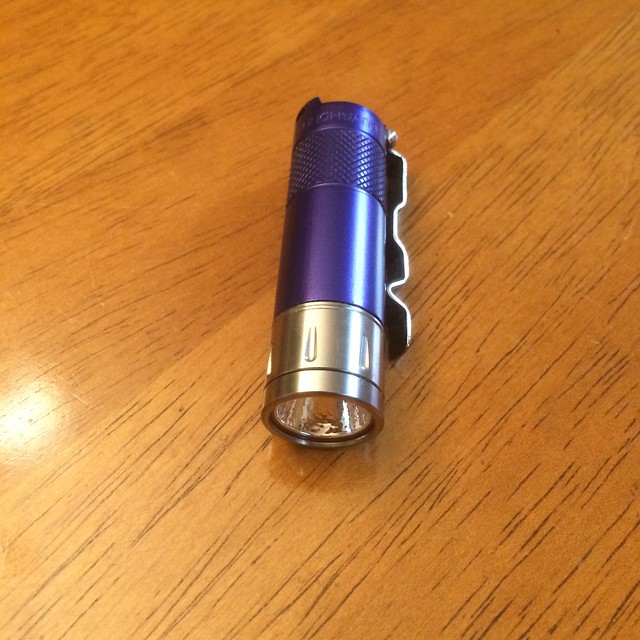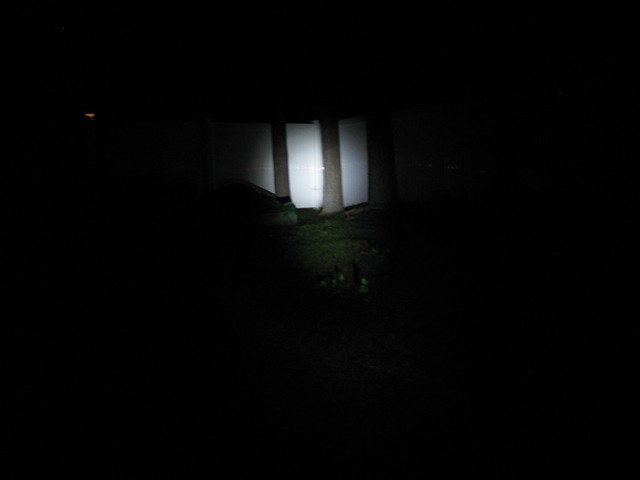The Big Night: Why Halloween is Actually a Flashlight National Holiday
Tony Sculimbrene 10.04.17

As the trees slip into their autumnal coats and the New England skies turn deep blue, we pass into October. There is all sorts of outdoor stuff to look forward to: splitting wood, bug-free hikes, camp fires. October is a great month if you like to be outside and you like gear. But the end of October represents perhaps the closest thing we flashoholics get to an official holiday: Halloween. In many ways it is the perfect test of an EDC flashlight and the one night of the year when folks marvel at our toys instead of sniggering.
For the past few years my light has been the same: the HDS Rotary 250.
It’s hard to beat in terms of durability and ease of use. If I drop it on the road or it rolls into a puddle I am 100% unconcerned. I also like the clip, as it lets me stow the light in case I need to switch to pack-mule mode and either carry candy or a boy or both. To quote the great Ferris Bueller, “If you have the means, I recommend you pick one up.” If you don’t, fret not–there are many good lights for Halloween night. Surprisingly enough, Halloween has numerous tasks to test your torch.
Why You Need Hi CRI: Zombies and Those Skittles that Taste Like Vomit
Hi CRI is a reference to a light’s ability to generate sunlight-like illumination. CRI (color rendering index) is measured on a scale of 0-100, with sunlight scoring a perfect 100. High-end art galleries and museums pay tons of money for light setups that get them close to 100, in the 98-99 range. The best flashlights run in the 93 to 95 range.
In the picture above, the leftmost light is an incandescent bulb (which has an excellent CRI, but looks terrible for other reasons), while the two in the middle are tint-heavy LEDs. The rightmost is a Hi CRI emitter, producing the “best” whites on a white fence. If you dislike the green or blue tint to your LED light, it’s time to invest in a Hi CRI emitter (note that better color rendering usually comes at the cost of a few lumens, usually an imperceptible amount because our eyes see lumens logarithmically). In short, reds look redder, blues look bluer, and human flesh can be easily distinguished from zombie flesh–an important thing on this most zombie-friendly of nights.
But in case you avoid the walking dead, there are other real-world applications for a Hi CRI emitter on Halloween. Suppose you are like me and tasked with running the kiddos around the neighborhood. And also, suppose like me you occasionally (very occasionally) sneak a candy bar or two. If you do, a Hi CRI emitter can help you avoid the dreaded pack of purple Skittles, which, with a regular LED look perilously similar to the classic (and far more delicious) red pack of Skittles. After you accidentally rip open the purple pack and eat a few Skittles that taste like feet or barf, you will never go Hi CRI-free again.
Why You Need Good Runtimes–it’s All About the Haul
If you go solely by the numbers that get the “WAR” font on flashlight boxes or product pages, all that matters is lumens. If you have used a flashlight at all, you know that lumens very rarely are a make-or-break issue, but runtime is. And so for most tasks I prioritize how long the light can go before needing a fresh set of cells. My favorite light of all time, the Muyshondt Aeon Mk. III, has received new batteries around the time a new generation of emitters comes on the market.
Let’s be candid–the sole purpose of Halloween, as a parent, is to make sure your kids get enough candy so you can bribe them with it, one piece at a time, from Halloween to Easter (when you can stock up again on bribe currency). The longer your light runs, the farther you can go, and the farther you can go, the more sugar-filled-kid-cash you can acquire. Every year we venture forth a bit more. Last year, my step counter showed that we made 7,000 steps during trick or treat. That seems like an awfully pedestrian (see how I did that?) number to me. With some serious stamina from my light I am hoping to double that. That way we can definitely make it to the Easter Bunny’s spring visit.
Why You Need a Bit of Throw: “Werewolf” or WEREWOLF!
Lots and lots of EDC lights put a heavy emphasis on lumens and a bright splash of light. But in the end, you probably need more than the all-flood beams that are popular on a lot of production lights. Just a bit of throw really goes a long way. Here is a little bit of throw:
Here is substantially more from the exact same spot:
The trees in both pictures are about 100 feet away. Last year I was blown away by the fact that the HDS Rotary’s “perceived” output crushed the oLight S1R’s perceived output despite the fact that the S1R is rated as being more than twice as bright. A bit of throw was what made the difference. If I can hit a street sign 100 feet away with just a few lumens, that makes the light look brighter than a light that can’t reach it at all.
Halloween always seems to be the time of year when stupid people feel like they have a license to exercise their talent (the same can be said with slutty people at Halloween). And so, while out gathering candy, it’s helpful if you can spot trouble at a distance and go the other way. With a bit of throw you can do just that, steering clear of those that treat Halloween as the Equinox of Imbecility.
This year I am going to leave the Rotary at home for the first time since I bought it. Instead, I am going to be carrying the incredible Torchlab BOSS 35.
With a 1200 lumen high, a great set of TIR optics, and runtimes on low or medium that could let you wait for the Great Pumpkin until December, I have to try it out. And to be honest, I lied; I am still taking the HDS Rotary. After all, I am a Gear Geek and if that means anything it means excessive preparation, such as having a $250 backup flashlight.





